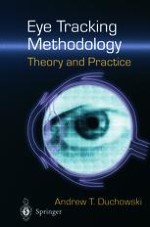2003 | Buch
Über dieses Buch
The scope of the book falls within a fairly narrow Human-Computer Interac tion domain (i. e. , describing a particular input modality), however, it spans a broad range of inter-disciplinary research and application topics. There are at least three domains that stand to benefit from eye tracking research: visual per ception, human-computer interaction, and computer graphics. The amalgam ation of these topics forms a symbiotic relationship. Graphical techniques pro vide a means of generating rich sets of visual stimuli ranging from 2D im agery to 3D immersive virtual worlds while research exploring visual atten tion and perception in tum influences the generation of artificial scenes and worlds. Applications derived from these disciplines create a powerful Human Computer Interaction modality, namely interaction based on knowledge of the user's gaze. Recent advancements in eye tracking technology, specifically the availability of cheaper, faster, more accurate and easier to use trackers, have inspired in creased eye movement and eye tracking research efforts. However, although eye trackers offer a uniquely objective view of overt human visual and atten tional processes, eye trackers have not yet gained widespread use beyond work conducted at various research laboratories. This lack of acceptance is due in part to two reasons: first, the use of an eye tracker in an applied experimen tal setting is not a widely taught subject. Hence, there is a need for a book that may help in providing training.
Anzeige
